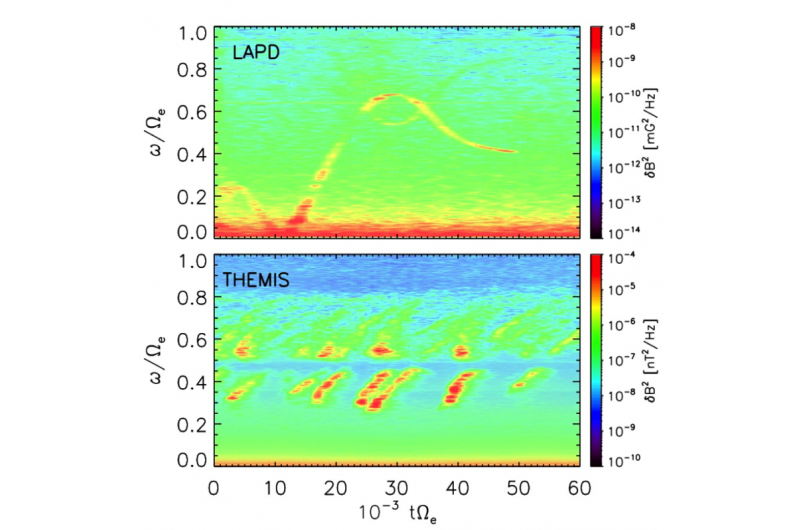Recreating a heavenly chorus of plasma waves on Earth

Recent experiments at the Large Plasma Device (LAPD) at the University of California, Los Angeles, have successfully excited elusive plasma waves, known as whistler-mode chorus waves, which have hitherto only been observed in the Earth's near-space environment. These chorus waves were accidentally discovered as early as World War I by radio operators deploying long lines intended to intercept enemy communication, and were subsequently dubbed "dawn chorus" since the sound of the radio signal when played through loudspeakers sounded like the distant chirping of a rookery of birds.
In the modern space age, whistler-mode chorus waves were recognized as playing a key role in accelerating electrons to extremely high energies in the near-Earth space environment, acting as nature's own cyclotron accelerator in creating the so-called Van Allen Radiation belts. However, the detailed excitation process of chorus waves, particularly as it leads to their distinct chirping quality, could never be observed in space, and eluded laboratory measurement until now.
A novel experiment at the LAPD at UCLA has shown how a key range of the background plasma parameters, together with free energy supplied by an energetic electron beam, leads to the generation of chirping chorus waves, and diagnostics available in the plasma laboratory reveal the inner structure and mechanics of these waves (Figure 1).
Measurements reveal that a complex interplay of different excitation modes, and waves at different frequencies propagating in opposite directions, produce the wave signatures that are characteristically observed in space. These observations provide an unprecedented constraint on theoretical models and will transform our understanding and ability to predict the excitation of chorus waves in space, ultimately leading to an understanding of the radiation belt acceleration process that poses a threat to satellites operating in space.
More information:
Abstract: NI2.00003 Excitation of chirping whistler waves in a laboratory plasma
Session Session NI2: Waves and Instabilities
9:30 AM-12:30 PM, Wednesday, November 18, 2015
Provided by American Physical Society




















